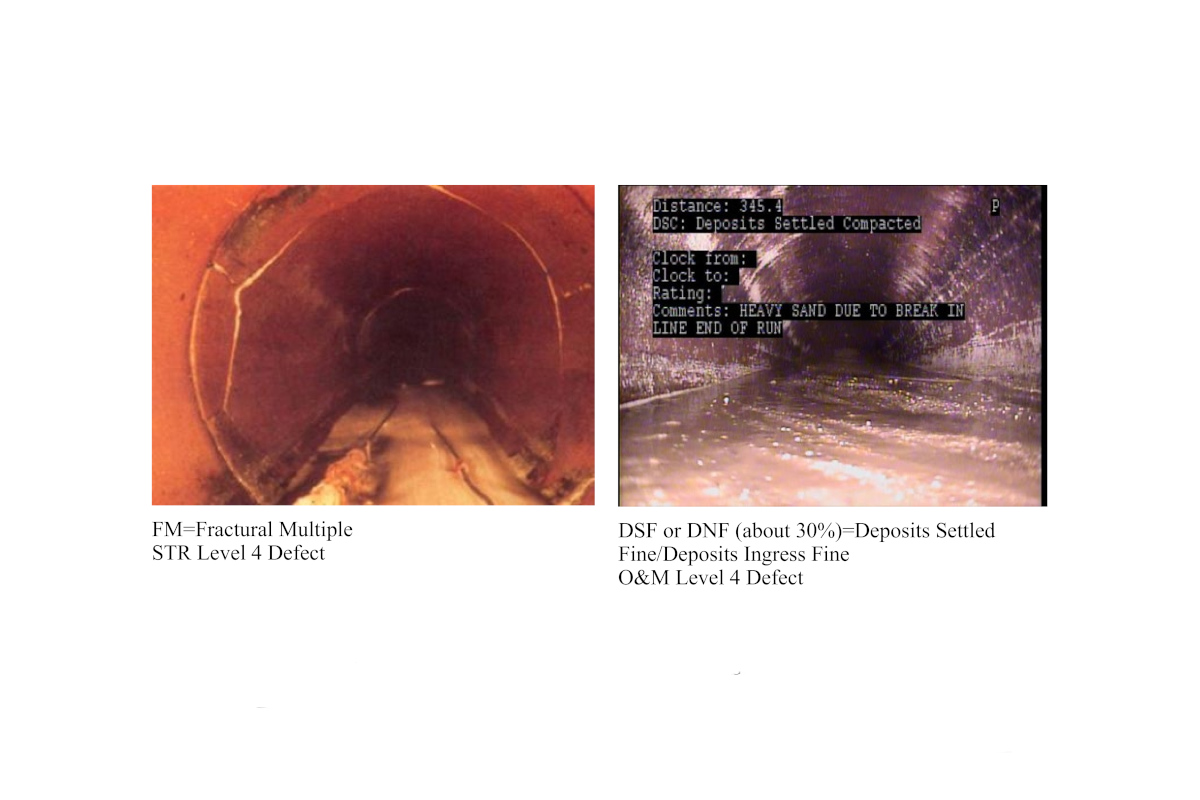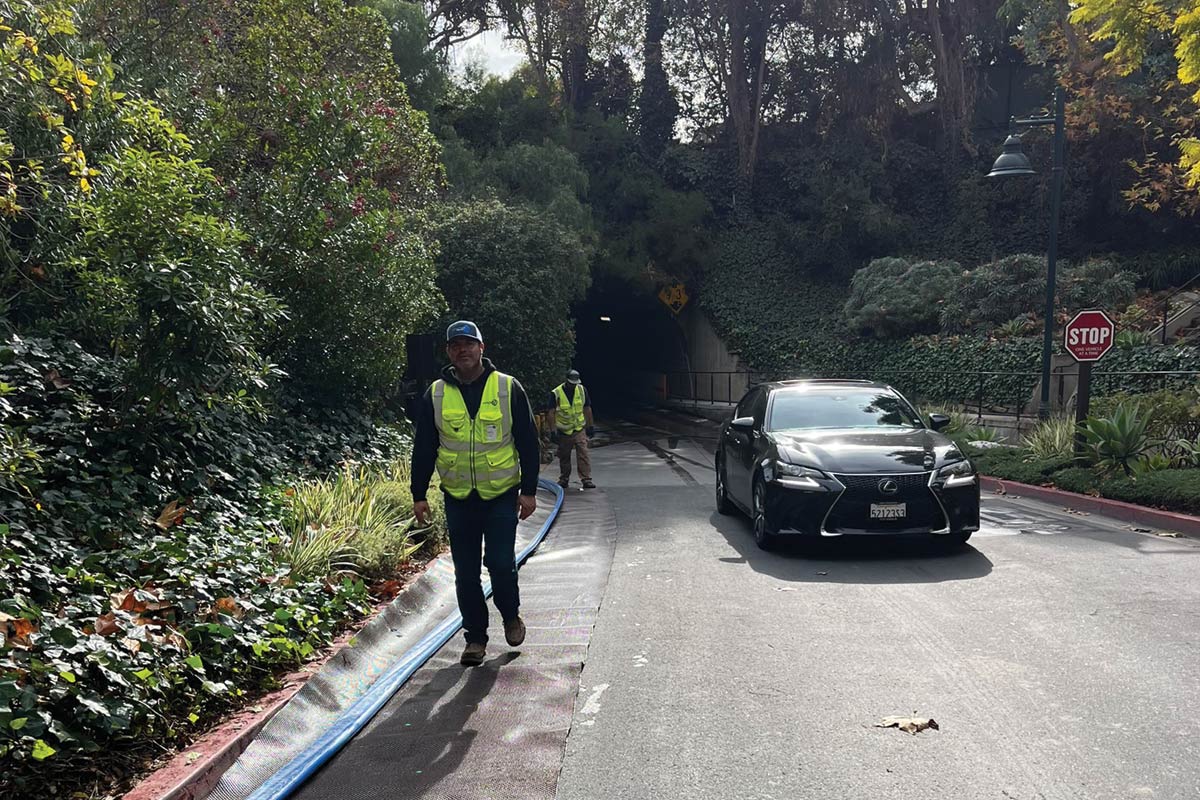
Five Trenchless Methods Under One House – 5600 S Widening at I-15 in Utah
BTrenchless was selected as the trenchless contractor to assist Sandridge Constructors with the Utah Department of Transportation’s interchange reconstruction and widening project in the cities of Roy and Riverdale in Weber County, Utah, at 5600 S and Interstate I-15.
The project is being delivered as a progressive design-build project with construction under way since the summer of 2023 and an anticipated completion date in fall 2026.
BTrenchless initially priced the project in February 2023, advanced to the final stage of subcontractor selection that summer and got under subcontract in the fall of 2023. The final scope of work is anticipated to include 11 different utility installations utilizing five different construction methods:
• Two open-cut casing installations (24-in. x 500 lf, 48-in. x 200 lf)
• One auger bore (38 lf x 48-in.)
• Three guided (GBM) auger bores (24-in. x 81 lf, 24-in. x 365 lf, 42-in. x 360 lf)
• Three on target steering (OTS) auger bores (42-in. x 210 lf, 48-in. x 96 lf and 177 lf)
• Two horizontal directional drilled (HDD) installations (6-in. x 275 lf and 24-in. x 270 lf)
With the progressive design-build concept in mind, BTrenchless was involved early in the design process for most of the awarded scope and was able to make some adjustments to make installations more constructable and more cost efficient.
A few of the more interesting stories include the 500 lf x 24-in. open-cut, the 360 lf x 24-in. GBM auger bore, the 177 lf of 48-in. OTS and the 270 lf of 24-in. HDD.
The open-cut installation of the 500 lf, 24-in. casing for Roy City Water was originally called out to be an 820 lf, 24-in. installation. Had the original plan been constructed, this GBM auger bore would have set a company best installation distance with this method and raised the bar for the trenchless industry.
Fortunately for the project team, a re-route of the waterline was considered and an opportunity to place the casing underneath a future pedestrian trail through an existing nearby abandoned railway underpass was seized. In early October 2023, BTrenchless revised its pricing and mobilized a crew to install the 500 LF of 24-in. casing below the future pedestrian trail concrete floor.
This was a big win for its subcontract from the client and owner’s perspective, saving them $400,000 in the process and keeping this portion of the project on schedule with less phasing restrictions on the roadway construction above.
Another installation for Roy City Water required installation of 360 lf of 24-in. steel casing across interstate I-15 and the Davis Weber County Canal (DWCC). Originally designed as a 285-lf bore, there was an extremely challenging open-cut portion required to dig underneath the DWCC.
The team decided that extending the bore past the canal should be considered and could reduce risk on that portion of the work. This required lowering the bore alignment and flattening out the grade. A GBM auger installation method was chosen due to the length of the bore and tight clearance tolerances past the existing utility network.
During construction, the pilot rods got stuck at 230 lf and were unable to advance without losing line and grade. This location fortunately was on the east side of I-15 and could be excavated down to investigate the obstruction. Viewed by the team as a differing site condition (DSC), it was an easy decision to move forward with a rescue pit above the stuck GBM rods to remove the obstruction, continue the GBM, and then come back following completion of the bore to backfill the excavation with a CLSM material.
The 177-lf crossing of 5600 S would wind up being one of the more challenging bores on the project. The team used a 48-in. McLaughlin/OTS machine, which is a steerable head welded to the lead piece of the steel casing. The OTS allows for steering adjustments to be made from the safety of the bore pit and completes bores in a single pass as compared to the multiple step process of the GBM-auger method.
While boring the third stick of casing at roughly 60 LF, the BTrenchless crew hit a full face of concrete, an obstruction large enough and hard enough to stop our bore machine. This obstruction was an abandoned bridge foundation that had been left in place underneath the active 5600 S roadway.
The DWCC used to be an open-air canal across 5600 S, not the current enclosed box culvert, and the roadway was built with a bridge across the canal. Unfortunately, this roadway also happens to be one of only three access gates into the Hill Air Force Base (HAFB), shutting it down for exploratory excavation was not a viable option.
The team collaborated on what options could be pursued, did some potholing the next night and found two more locations with concrete and rebar debris. The team was forced to come up with a unique solution.

Due to limited night traffic closure windows associated with keeping the HAFB access gate open during the daytime, the reality of abandoning the bore efforts entirely and installing pipe with a traditional open-cut shored method wasn’t very practical or cost efficient. The limited working hours would make an open-cut option take too long.
The decision was made to open-cut the bore alignment and clear the path of all debris then immediately backfill it with imported fill that could easily be bored through. This effort would be completed in two shifts of night work – all of the work could be done from the top with machines, not requiring personnel access into the trench and therefore didn’t require shoring. A much safer and much quicker operation all together.
With the bore path clear, BTrenchless was able to resume operations with its 48-in. OTS machine and completed the bore on line and grade as designed. The 36-in. Weber Basin waterline would then be installed through the casing.
The 270-lf HDD installation involved a grade-critical upsizing of an existing water line for the Clinton Ditch irrigation company. Site constraints on the west side of I-15 and an existing high pressure gas line on the east side didn’t allow for a traditional at-grade start for the bore as is common with most HDD projects.
BTrenchless found a location for a large 25-lf deep excavation at the start of the bore and built a long ramp that its Vermeer 100/140 drill rig could walk down to gain access for the bore. That bore pit utilized three different support-of-excavation (SOE) techniques: laying the material back at a 1:1.5 slope, using a trench box at the front of the bore pit, and constructing a steel pile and lagging wall at the back of the pit.
The west side of the project required the team to set up its fused 24-in. pipe string in the middle of 6000 S Street and then pull the fused pipe between a 12-lf wide alleyway between two existing businesses into a small receive pit. This would require a full closure of the traffic intersection at 6000 S and 1900 W during the pullback and installation of the final 24-in. irrigation pipe.
The team worked well together navigating a tight utility corridor while executing a well thought out plan getting the irrigation line upsized and replaced on line and grade ahead of the spring run-off.
BTrenchless prides itself on its teamwork, ability to think outside the box, use all the tools in its toy box, and build challenging work safely.




